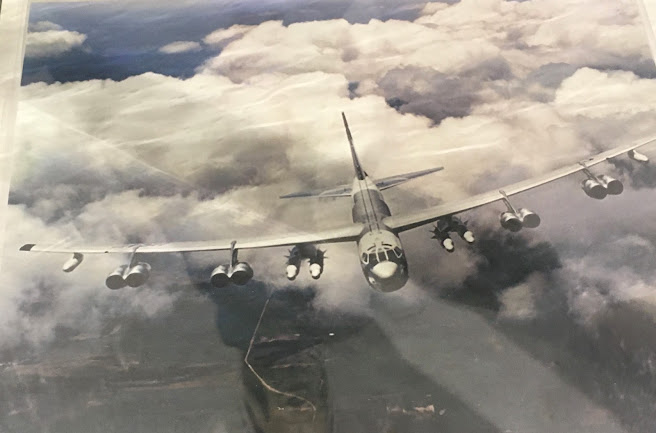As we continued our trip westbound, we spent the night in Big Spring, Texas. After setting up camp, we checked our Roadside America App. and discovered there was an aviation museum close by at an abandoned U. S. Air Force base.
During World War II, the Army Air Corp needed a location where they could train bombardiers and they decided Big Spring was a good location for that.
They built a large airport here with all of the facilities to begin training.
They converted Beech 18 civilian transport airplanes into simulated bombers.
This is what an original Beech 18 looks like.
They cut off the nose of the original airplane and then installed a plexiglass nose that would simulate the size and shape of the nose of a bomber.
Then, before each flight, they would install a Norden bomb sight and begin training.
The Norden bomb sight was a very top secret piece of sophisticated equipment. It was an improvement over the standard bomb sites that existed before World War II. The old bomb sites had an accuracy of about 40%-60%. The Norden bomb site raised the accuracy to over 90%.
This giant leap in technology was very secret and for that reason, the training base had a very high security area where each night, all of the bomb sights were removed from the airplanes and locked into a large vault that was guarded around the clock.
Only certain technicians with Top Secret security clearances and the bombardiers that would use the sights were ever allowed to be within eyesight of the bomb sights.
Here, a bomb sight is being loaded into the nose of the aircraft under armed guard escort before a flight.
Many of the training flights were flown by WASP pilots.
After learning all about the Norden bomb sight from the Docent at the museum, we were turned loose to explore the rest of the small museum.
The first stop was an actual nose from a B-52 bomber, that you could actually climb into.
They say simulators can be just like the real thing. Notice the death grip Suzie has on the control yoke as she simulates flying the B-52!
View of the pilot's seat and a fist full of throttles.
As big as this airplane is, it was still cramped in the cockpit and took a contortionist to climb into and out of the pilot and co-pilot seats.
The next stop was an A-10 cockpit simulator. This was just the cockpit portion but here is what the whole airplane looks like.
Suzie's dad was a mechanical engineer and early in his career, he was part of the engineering team that developed the J-69-T-9 jet engine used on the T-37.
Here is a file photo of a T-37 flying with a T-38.
Both aircraft were represented at this museum because after World War II, this training base was taken over by the newly established U.S. Air Force and designated as Webb Air Force Base.
This was a great find and we really enjoyed climbing on the simulators.
We are continuing westbound and if we stumble across any more interesting finds, we will share them with you,
Tom & Suzie






















































